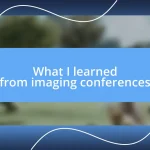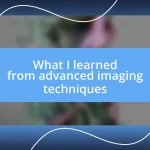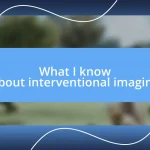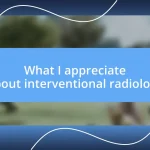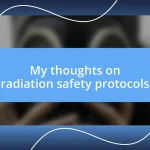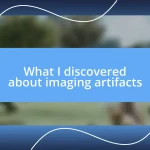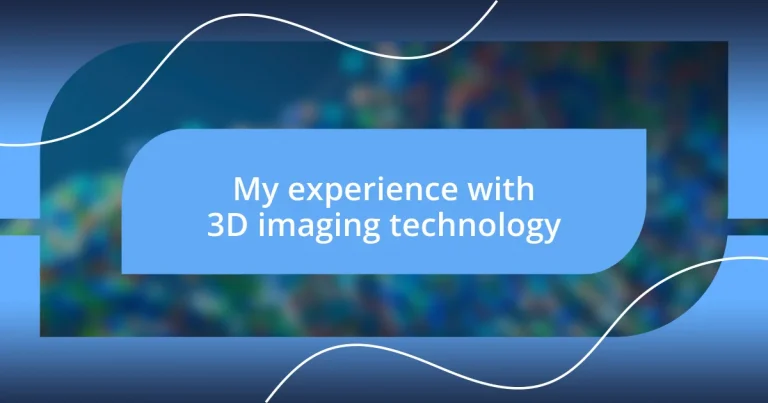Key takeaways:
- 3D imaging technology enhances creativity and precision across multiple industries, allowing for better visualization of complex structures.
- In healthcare, 3D scans enable doctors to plan surgeries with high accuracy by practicing on 3D models before operations.
- The technology’s integration into education and entertainment fosters interactive learning experiences and enhances creativity in film and gaming.
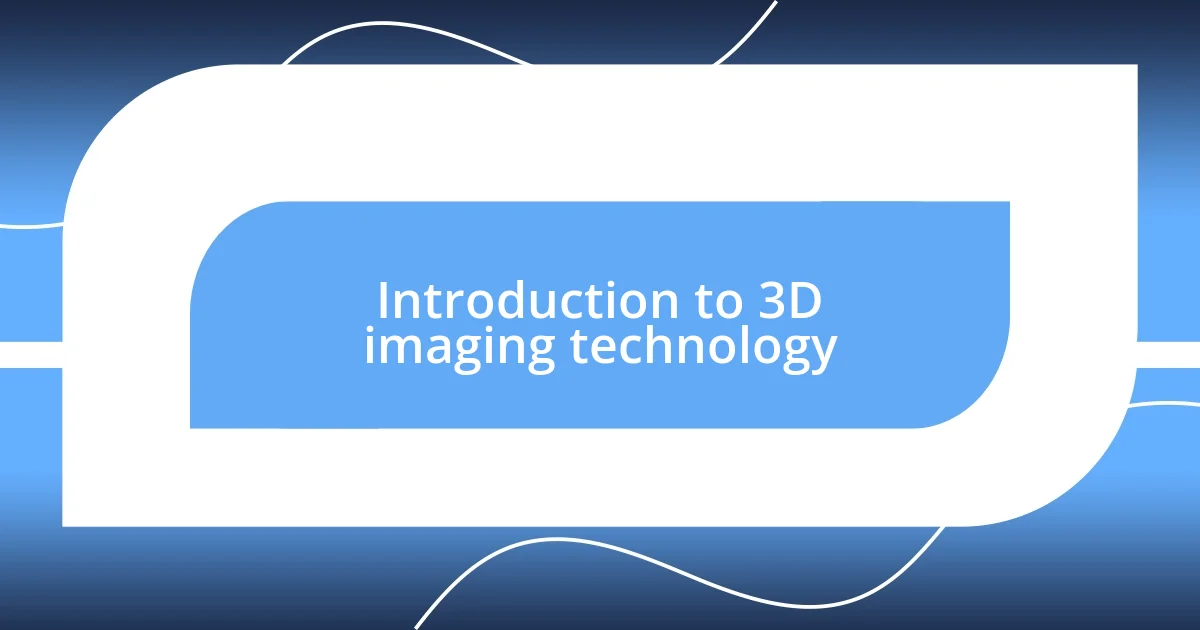
Introduction to 3D imaging technology
3D imaging technology has transformed how we perceive and interact with the world around us. I remember the first time I used a 3D scanner; it felt like stepping into a new realm of creativity and precision. It’s fascinating to think about how this technology can bring objects to life, allowing us to visualize complex structures in a way that traditional imaging simply can’t achieve.
Have you ever considered how essential 3D imaging is across various industries? From healthcare to entertainment, the applications seem endless. For instance, in medical imaging, 3D scans help doctors plan intricate surgeries with remarkable accuracy. I was truly amazed when I learned about how surgeons can practice on 3D models before touching a patient.
As I immersed myself further into this technology, it struck me how it mirrors our own understanding of spatial relationships. Just think about it; with 3D imaging, we can grasp dimensions that flat images gloss over. This ability to visualize data in three dimensions has deepened my appreciation for the intricate nature of both technology and the world we inhabit.

Key applications in various industries
In the architecture and construction industries, 3D imaging technology has been a game changer. I recall walking through a building site that had utilized 3D modeling; it was like having a blueprint come to life. The ability to visualize the entire structure in advance helped the team make informed decisions about materials and layout, ultimately saving time and resources.
In the realm of education, I’ve seen how 3D imaging aids in creating interactive learning experiences. Imagine students exploring ancient ruins or dissecting a complex organism in class through virtual reality. This hands-on approach not only captivates students’ imaginations but also reinforces their understanding of complex subjects by bridging abstract concepts with tangible experiences.
The entertainment industry has embraced 3D imaging as well, especially in film and gaming. I often think back to seeing a behind-the-scenes feature of a blockbuster film where the animators used 3D imaging to create breathtaking visual effects. It struck me how this technology allows artists to push the boundaries of creativity, immersing audiences in worlds that were once confined to their imaginations.



